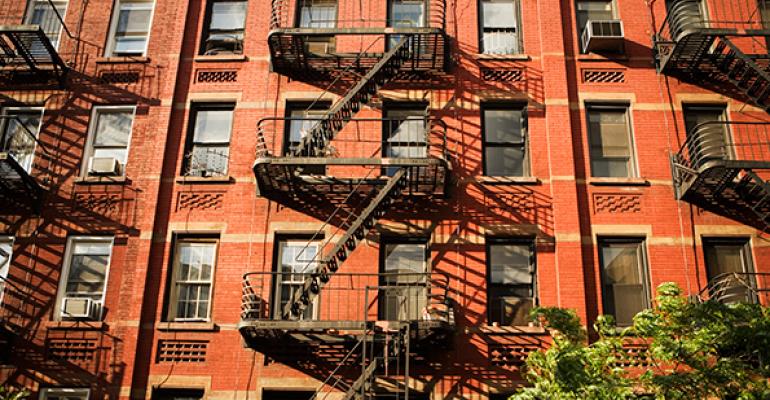Apartment property prices may finally stop rising—and even begin to fall—when interest rates start going up.
“The assumption is that capitalization rates would jump higher with interest rates,” says Luis Mejia, chief multifamily economist with research firm CoStar Group.
But the rise in cap rates is likely to come very, very slowly. Cap rates on apartment properties have been going from low to lower for years as apartment prices climbed steadily higher. However, federal officials might soon make a change to benchmark interest rates—the Federal Reserve had strongly hinted it might raise rates at its September meeting. Bad news from the world economy delayed the action, but officials are still likely to raise rates by the end of the year. Higher interest rates usually mean higher cap rates.
“The strong U.S. dollar and lowered gasoline prices will join other positive economic forces to prompt Federal Reserve action on interest rates later this year,” according to the “Economic Outlook, Summer 2015” report from brokerage firm Marcus & Millichap.
Cap rates bottoming out
The prices investors pay for apartment properties have been rising for years relative to the income produced by the properties, driving down yields for investors. Those price hikes seem to be leveling off. In the third quarter, apartment properties sold at an average capitalization rate of 5.1 percent, according to the latest estimate from CoStar. That’s roughly the same as in the second quarter and down from 5.25 percent the year before. It’s also down from 5.50 percent in the third quarter of 2013.
Cap rates are likely to start rising once interest rate finally start to rise. In part, that’s because when property buyers have to pay higher interest rates on their acquisition loans they tend to expect a higher yield from the property to help them pay that interest.
However, cap rates won’t rise nearly as dramatically as interest rates.
“Even if the Federal Reserve raises interest rates, that doesn’t necessarily mean cap rates are going to jump up by the same amount,” said Mejia. “Cap rates are leveling off—it’s basically a flat forecast.”
Over the next two years, interest rates are likely to rise by 50 to 100 basis points. Over the same period, cap rates for apartment properties might go up just 5 to 10 basis points, according to a forecast from CoStar. That’s hardly an increase at all.
That’s partly because cap rates are now fairly high—at least compared to interest rates. At 5.1 percent for apartment properties, average cap rates are roughly 300 basis points higher than the yield on 10-year Treasury bonds. That’s much wider than the 100 basis point spread between cap rates and Treasury bond yields during the real estate boom in 2005 and 2006, when cap rates were relatively low compared to interest rates, according to CoStar.
Cap rates are also usually slow to respond to swings in interest rates. Rates are often influenced by prices on bonds that rise and fall from day to day, unlike the real estate assets, which take much longer to buy and sell.
Extra low cap rates for top markets
Investors also reward the most desirable properties in the most desirable places with higher prices compared to income.
“Investors have fallen in love with top assets in primary markets,” says Mejia.
Apartment properties in primary markets sold at cap rates that were 90 basis points lower on average than cap rate on assets in secondary markets. That’s a bigger difference than usual—the historical spread is just 70 basis points. Investors also prefer apartment properties in urban areas compared to suburban properties. Average cap rates for urban properties were 100 basis points lower in the second quarter, compared to a difference of just 50 basis points at the worst point of the downtown.

